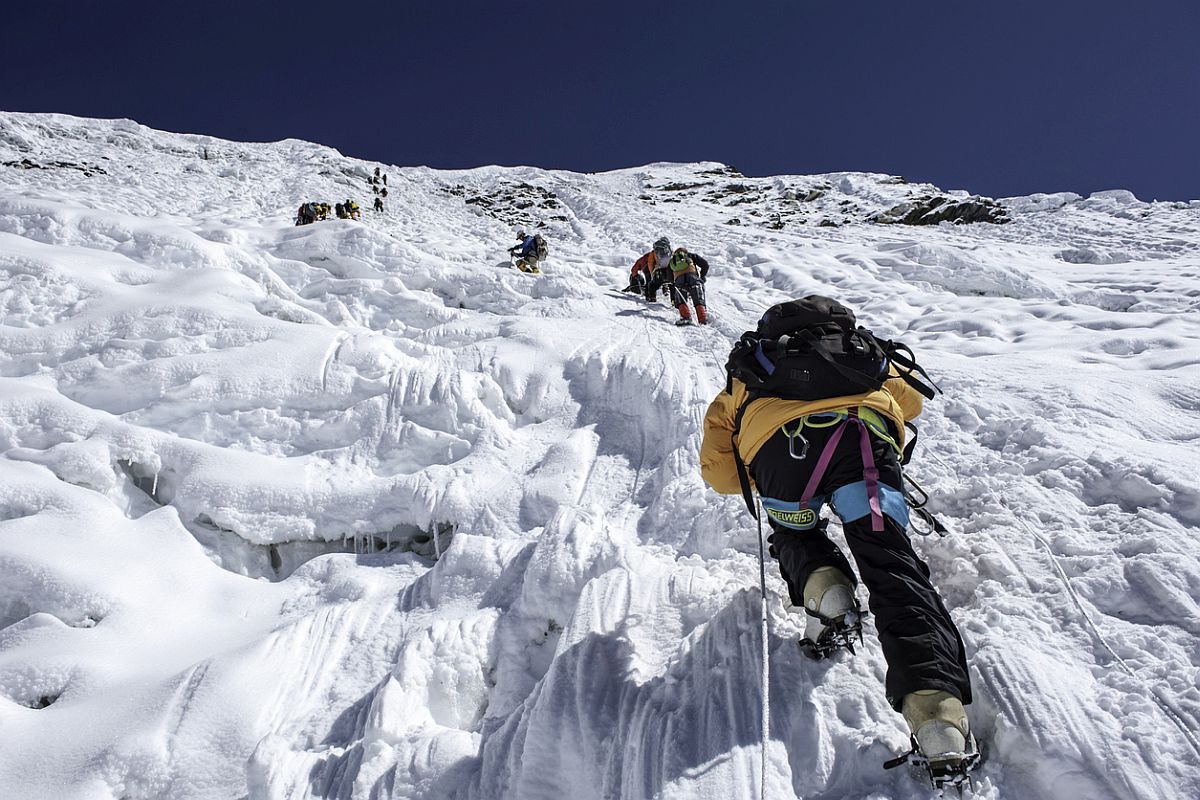Seventy years after Edmund Hilary and Tenzing Norgay captured the imagination of adventurers by climbing Mount Everest, the world’s highest peak continues to draw the attention of mountaineers. If until 1953 it was the urge to be the first that drew them, it now has become a badge of honour that many seek and several thousand have obtained, some of them more than once. The result has been a rush to get there, as it were, with the famous photograph of climbers crammed in a queue above South Col’s sharp ridge a few years ago having become an emblem of the modern-day Everest odyssey. Indeed, things have got so bad that there is barely room to stand on the peak, when several climbers get there at about the same time having walked single file over Hilary’s Step, the last obstacle.
Several deaths were attributed to the overcrowding in 2019, as inexperienced climbers clogged the route to the peak, causing interminable delays that forced many to succumb to high-altitude sickness. And that was the consequence of permits being issued by Nepal’s government to 381 climbers. This year, a cashstrapped government in Kathmandu has decided to issue 454 permits to those with their eyes on the peak.
Advertisement
As each of them will have at least one local guide, this means more than 900 people will be attempting to use the short window that the weather allows for making the climb. This effectively means that climbers must brace for a high-altitude traffic jam, one that could have debilitating, even fatal consequences. Nepal needs the funds; it charges every climber upwards of $10000 for the permit, and the local economy needs the many more dollars that Everest tourism brings.
But experienced climbers have said the criteria used by authorities to issue permits are as much the problem as the sheer numbers. For all that is needed to set a climber on his or her way from Nepal, besides deep pockets, is a permit from a doctor certifying a person’s fitness, without a determination of the climber’s stamina at high altitudes, or indeed of significant mountaineering experience.
The other consequence of the Everest rush, of course, is the amount of debris that each climber leaves behind, causing some to describe the revered peak as the world’s highest garbage dump. It is estimated that each climber generates about 8 kilograms of trash, and much of this is left behind.
The slopes are said to be littered with empty oxygen cylinders, discarded tents, food cans and, of course, human waste. And as glaciers melt with global warming, they are revealing the debris of the years gone by. While conservationists have long argued for better regulation and stricter conservation efforts, their appeals have fallen on deaf ears. This year, 96 climbers from China and 87 from the United States will be among those attempting the climb. They must prepare as much for the challenge as for the rush.
